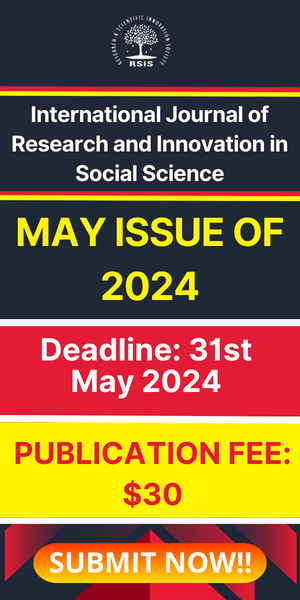Effect on Rheological Properties of Concrete Using Manufactured Sand
- February 2, 2021
- Posted by: RSIS Team
- Categories: Civil Engineering, IJRSI
International Journal of Research and Scientific Innovation (IJRSI) | Volume VII, Issue XII, December 2020 | ISSN 2321–2705
Effect on Rheological Properties of Concrete Using Manufactured Sand
Jeevan Kumawat1, Er. R.S. Shekhawat2
1M.Tech student, Dept. of Civil Engineering, College of Technology and Engineering, MPUAT, Udaipur
2Assistant Professor, Dept. of Civil Engineering, College of Technology and Engineering, MPUAT, Udaipur
Abstract
A few choices have come up for the industry to bank one of which manufactured sand or M-sand, as it is called, is discovered to be the most appropriate one to supplant river sand. M-sand has grabbed the eye of the construction industry and environmentalists alike for its quality and the base harms it causes to nature. Utilization of M-Sand can radically lessen the expense since like river sand, it doesn’t contain impurities and wastages are nil since it is made with present day modern technology and machinery. When the M-sand turns out to be more famous in the construction industry, the interest for river sand and illegal sand mining would descend, A very much handled produced sand as a half or full substitution to river sand is the need on the increase due to the recent recession in the world economy. Conventional construction materials are becoming expensive (Karthik et al. 2017).
One possible source of construction fine aggregate is sand that has been manufactured from the crusher dust that results when coarse aggregate is produced in hard rock quarries. Coarse aggregate creation commonly yields 25% to 45% smasher dust contingent upon the parent rock, crushing equipment, and crushing conditions. By product of coarse aggregate means crusher dust, undergo further processing to provide the majority of the sand required by the construction industry.
However, compared to natural sand crusher dust tend to have inferior shape and texture properties as well as poor grading and unfamiliar mineralogical compositions all of which affect the properties of fresh and hardened concrete (Pilegis et al. 2016).
of great importance as a drawn-out arrangement in Indian concrete industry until other suitable alternative fine aggregate is created. In the current examination, a correlation of the Compressive qualities of River Sand and M-sand is finished with the hundred percent substitution of river sand by M sand.


